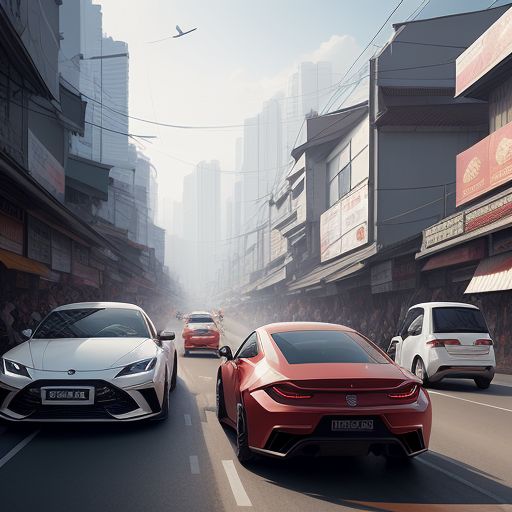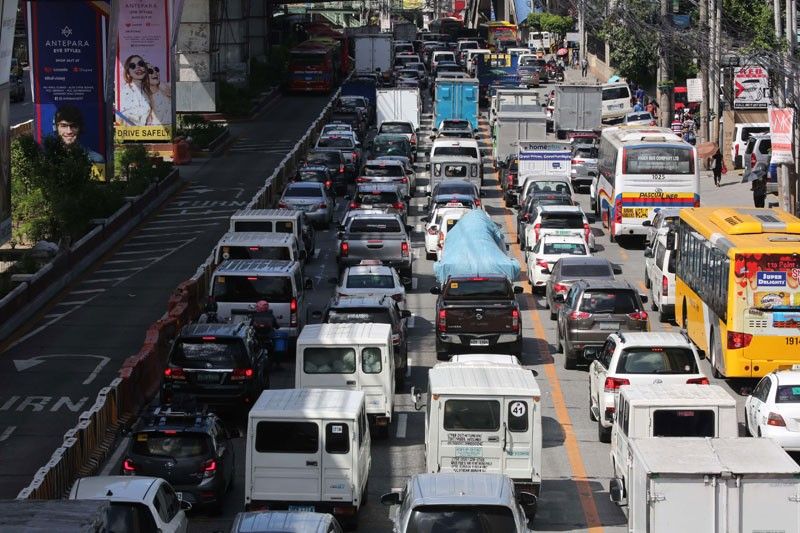Navigating the Metro Manila Maze

Traffic congestion in the Philippines, particularly in Metro Manila, is a complex issue with several contributing factors. Here are some of the most common causes:
Infrastructure Issues:
- Insufficient Road Network: The road network, especially in urban areas, can’t handle the growing number of vehicles, leading to bottlenecks and gridlock.
- Poor Road Quality: Potholes, uneven surfaces, and inadequate drainage contribute to slowdowns and accidents.
- Limited Public Transportation: The current public transportation system lacks enough capacity and efficiency, causing people to opt for private vehicles, further increasing road congestion.
Urban Planning Problems:
- Lack of Integrated Planning: Uncoordinated development projects often create traffic bottlenecks and impede smooth traffic flow.
- Insufficient Parking: Limited parking options force drivers to circle around looking for spaces, adding to congestion.
- Poor Land Use Planning: Mixing residential, commercial, and industrial areas in close proximity can lead to increased traffic volumes on local roads.
Economic Factors:
- Rapid Economic Growth: While positive, fast economic growth has led to a surge in car ownership, outpacing infrastructure development.
- Centralization of Jobs and Opportunities: Many Filipinos flock to Metro Manila for better job prospects, contributing to population density and traffic woes.
Behavioral Factors:
- Disregard for Traffic Rules: Traffic violations like illegal parking, disregarding traffic signals, and counterflowing contribute significantly to congestion.
- Lack of Driving Discipline: Aggressive driving, lane hogging, and frequent lane changes disrupt traffic flow and increase accident risks.
Other Factors:
- Natural Disasters: Floods and typhoons often damage infrastructure and lead to road closures, exacerbating traffic problems.
- Special Events: Large gatherings and concerts can cause localized traffic congestion.
While Sunday mornings offer some respite, navigating Metro Manila’s traffic is a daily reality for millions. Let’s dive into the current situation, typical travel times, and government initiatives aimed at easing the gridlock.
Current Situation:
As of Sunday, February 18, 2024, traffic apps like Waze and ViaMichelin report moderate congestion in key areas like EDSA, Commonwealth Avenue, and C5. However, these conditions can change rapidly, and peak hours often bring heavy traffic with slow-moving vehicles.
Typical Travel Times:
- Airport to Makati: 45 minutes to 1.5 hours depending on traffic and time of day.
- Airport to BGC: 30 minutes to 1 hour, with heavier traffic during rush hour.
- Airport to Ortigas: 45 minutes to 1.5 hours with peak hour delays.

Government Initiatives:
The Philippine government recognizes the urgency of addressing traffic woes. Here are some ongoing and planned actions:
- Infrastructure Development: Building new roads, bridges, and mass transit systems like the Metro Manila Subway.
- Traffic Management: Implementing Intelligent Transportation Systems (ITS) for real-time traffic monitoring and signal optimization.
- Public Transportation: Modernizing and expanding bus and railway systems, including Light Rail Transit (LRT) and Mass Rapid Transit (MRT) lines.
- Traffic Law Enforcement: Stricter implementation of traffic rules and regulations to deter violators.
- Promulgating Work-Shifting Schemes: Encouraging companies to adopt flexible work arrangements to lessen peak hour congestion.
Challenges and Outlook:
While efforts are underway, implementing these plans takes time and resources. Additionally, factors like population growth and increasing vehicle ownership continue to put pressure on the transportation system.
What are those typical days that traffic is worse?
While traffic in Metro Manila can be unpredictable, some days and times tend to be significantly worse than others:
Peak Rush Hours:
- Weekday Mornings: 7:00 AM to 9:00 AM
- Weekday Evenings: 5:00 PM to 7:00 PM, with Fridays typically the worst (average travel time for 10km in 2023 reaching 35 minutes and 30 seconds).
Special Events:
- Holidays: December holidays, particularly the week leading up to and after Christmas, experience significantly increased traffic due to shopping and travel.
- Sporting Events: Major sporting events at venues like Mall of Asia Arena or Philippine Arena can cause localized congestion in surrounding areas.
- Large Concerts and Gatherings: Similar to sporting events, large gatherings at venues like MOA Concert Grounds or Luneta can draw crowds and impact traffic flow.
Weather:
- Heavy Rain: Downpours and flooding often lead to road closures and significantly slower travel times.
- Typhoons: During typhoon season, travel disruptions are common due to road closures, fallen debris, and power outages.
Additional Factors:
- Accidents: Vehicle accidents, even minor ones, can quickly create bottlenecks and slow down traffic significantly.
- Construction Projects: Ongoing roadworks can cause temporary lane closures and delays.
- School Breaks and Long Weekends: Increased travel during these periods can contribute to heavier traffic, especially on major roads leading out of the city.
Which areas in Metro Manila people should avoid due to Traffic?
It’s important to remember that traffic conditions can change rapidly, so always check real-time updates through traffic apps or government advisories before your journey.
Besides the well-known traffic hotspots like EDSA, Commonwealth Avenue, and C5, here are some other areas in Manila you might want to avoid due to heavy traffic:
- Port Area: This area experiences heavy truck traffic, especially during weekdays.
- Ermita and Malate: These districts are known for their nightlife scene, which can lead to congested roads, particularly on weekends and during special events.
- Baclaran: This area is home to a large market and transportation hub, which can contribute to heavy traffic, especially during peak hours.
- Cubao: This busy intersection is a major bottleneck for vehicles traveling to and from Quezon City and Marikina.
- Sampaloc: This district is home to several universities and hospitals, which can contribute to traffic congestion during weekdays.
It’s important to note that traffic conditions can change rapidly depending on the time of day, weather, and other factors. So, it’s always a good idea to check real-time traffic updates before heading out.
Here are some tips for avoiding traffic in Manila:
- Use public transportation whenever possible.
- Travel during off-peak hours.
- Take advantage of carpooling or ridesharing options.
- Use Waze or other traffic navigation apps to plan your route and avoid congested areas.
- Be patient and allow extra travel time for your journey.
By following these tips, you can help to avoid the worst of Manila’s traffic and make your commute more enjoyable.
Traffic remains a daily hurdle in Metro Manila, but improvements are on the horizon. Staying informed about current conditions, utilizing alternative transportation options when possible, and supporting government initiatives can help alleviate the problem. Remember, patience and responsible driving are key to navigating the Metro Manila maze.
I’ve never been to Philippines, but now I feel like I know a little about its capital, Manila and daily life in the country involving transportation. Thanks!
Yes indeed. I am blessed enough I got to work in a permanent work from home setup. Thinking back all the struggles I had for more than 6 years battling the traffic was a nightmare. But there are a lot of things to enjoy here in Philippines. Hope someday you will have the chance to Travel here